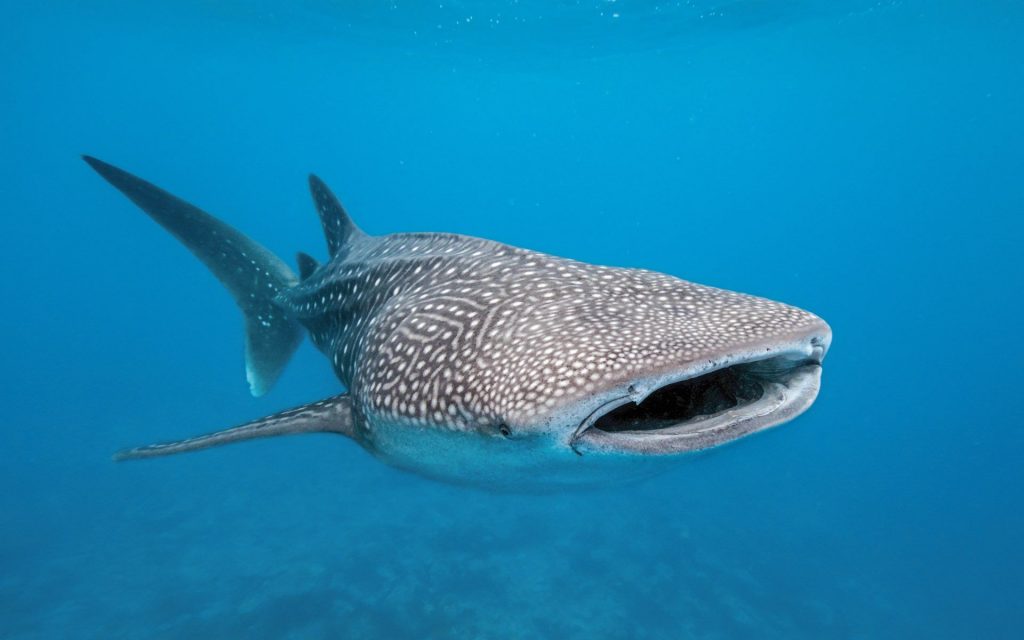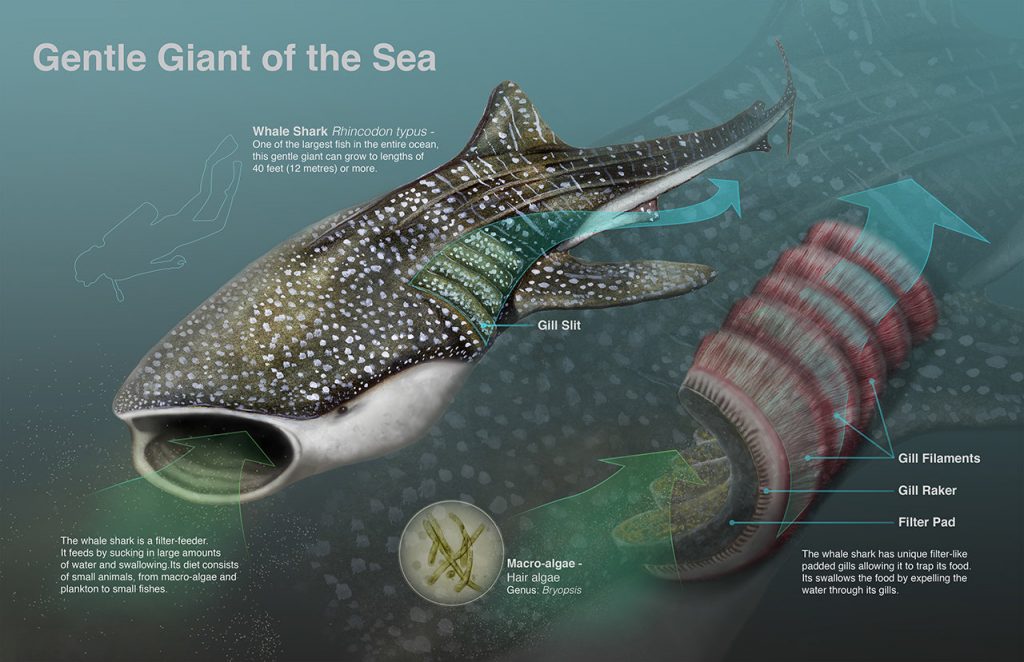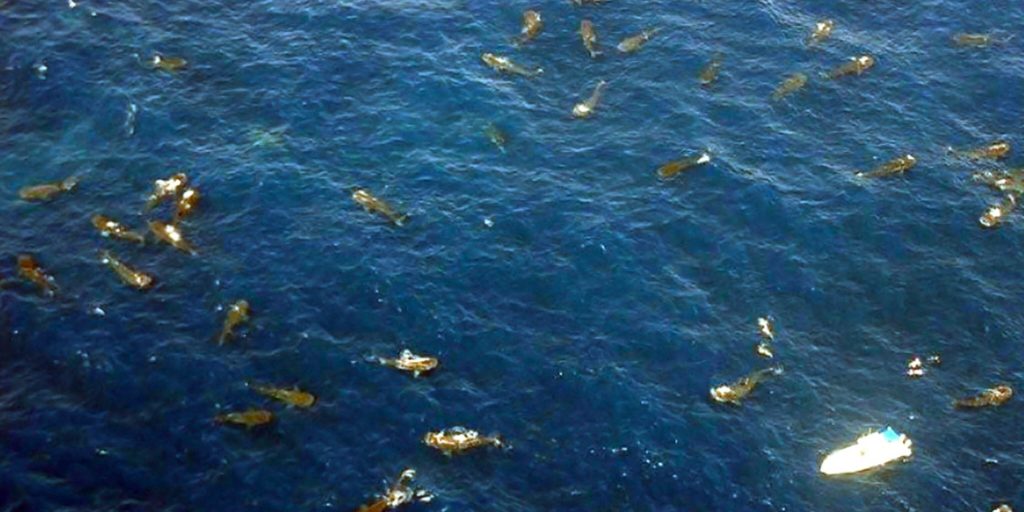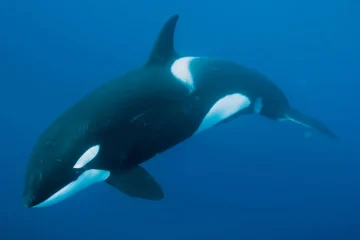To clarify it first, a Whale Shark is a shark, a gigantic shark. In fact, it is the largest living fish in the world. These creatures are so remarkable that they own a special day which falls on the 30th of August each year. International Whale Shark Day is therefore aimed at raising awareness about these magnificent fish species while encouraging any efforts of conserving them. Let us find out some more information on these enormous creatures so that you can realize why they deserve their very own day!
What does Whale Shark look like?
The Whale Shark (Rhincodon typus) is the largest fish in the ocean. The Blue Whale is the largest mammal in the ocean, remember?
Rhincodon typus is the only extant member of the genus Rhincodon belonging to the subclass Elasmobranchii of the class Chondrichthyes. A whale shark can grow up to a maximum length of 18 m and a weight of about 10,000 kg. However, most Whale Sharks studied so far have only given an average length of 12 m.
Whale Sharks differ from other shark species in many ways. They have a broad flat head, a truncated snout, and a large size mouth. Three conspicuous ridges are running along each side of the body. Its belly is white-colored. The back and sides are greyish colored and are with scattered white or yellowish stripes and spots. The numerous spots scattered on the dorsal surface of the body make it looks as if it is carrying “many stars”. The pattern in which these spots and stripes are arranged is unique and just like human fingerprints, gives an identity to individual sharks.

Any interesting behaviours?
Despite their large size, Whale Sharks are harmless and not aggressive, unlike their shark relatives. Therefore Whale Sharks are given a nickname as “Gentle Giants”. They are slow swimmers that move at a speed of about 3 miles per hour. However, they are long-distance migrators capable of traveling thousands of miles for their food and reproduction requirements.
The favorite foods of Whale Sharks are plankton, small fishes, and crustaceans. Although they possess 300 rows of teeth, they are vestigial teeth and have no use in feeding. In fact, Whale Sharks are filter feeders. For this purpose, they have a filtering apparatus that is composed of 20 unique filtering pads. These filter pads are sieve-like structures that help separate food from the water. During the process of filter-feeding, planktonic and other small organisms are caught in the filtering structure while water is expelled back to the ocean through their gill slits. Whale Sharks can process over 6000 liters of water per hour.

Whale Sharks display diverse feeding strategies. One method is passive feeding, in which a Whale Shark swims slowly keeping its mouth open, allowing planktons to strain from water. In active-suction feeding, the whale shark opens and closes its mouth creating suction and thereby allows water to suck into the mouth with a speed. They also display an interesting type of feeding where the animal comes to a vertical position and feeds using suction. The choice of feeding behavior depends on the prey abundance in the surrounding environment and energy requirement.
One could think that Whale Sharks might have been studied well because they are big and magnificent creatures. But it is not the case. Very little is known about their reproduction, growth, and longevity to date. The life span of a Whale Shark is estimated to be about 100-150 years. They are considered to be slower in growth and sexual maturation. Females are ovoviviparous which means they keep eggs in the body and give birth to young. However, these scenarios are not studied well and in fact, hardly observed.

Where do Whale Sharks live?
Whale Sharks are pelagic; occur in the coastal and open sea, often found feeding at the surface. However, they can dive up to 1000 m if they need to. They mainly inhabit tropical oceans and warm-temperate seas exception being the Mediterranean Sea. Usually, these animals are solitary. However, they aggregate at the sites with abundant plankton. Such places, therefore, have become prime tourist attraction sites.

What do they do in the ocean?
Eating plankton is the biggest job they do! Whale Sharks help regulate the oceanic plankton levels thereby protecting their home, the ocean. But isn’t it good to have plankton in the ocean? As long as they do not exceed their normal level, yes planktons are good and indicate a healthy marine ecosystem. However, too much planktonic biomass is detrimental. Excessive growth of planktons negatively affects several other marine organisms. These outgrowths sometimes lead to plankton blooms which are toxic to the animals in the ocean as well as for other animals at higher levels in the food chain.

Are they threatened as well?
Unfortunately, yes. One of the major goals of International Whale Shark day is to make the community aware of this tragedy faced by the world’s largest fish. Whale Sharks were listed as endangered by the IUCN in 2016. One main reason for them to be endangered is illegal fishing for their meat, oil, and fins which have a high demand as a delicacy. Accidentally being caught in fishing gears and vessel strikes are some other main reasons. The intrinsic characteristic feature of their late sexual maturation has also been identified as a reason for them to go endangered.
In 2003, they were listed under CITES (Convention on International Trade in Endangered Species of Wild Fauna and Flora) to regulate the international trade of live animals and their parts. To make it worse, their habitats are also in danger due to climate change, marine pollution, etc. Climate change causes changes in both prey and Whale Shark populations. Currently, there is no proper estimate of the global Whale Shark population.
Once, a dead, 18 feet long Whale Shark was washed to the coast of Tamil Nadu in India caught global attention. It was assumed that a vessel strike was the cause of death as the dead animal was injured severely. Later in the postmortem, a plastic spoon was found stuck in the whale’s digestive system. This is a shocking reveal of how plastic waste affects innocent marine species. Especially filter feeders suffer a lot because of these plastics we dump into the ocean.

How can we protect Whale Shark?
There is good news! It is not too late. We can get involved in the conservation of Whale Sharks by making the community aware of their importance to the marine ecosystem and their declining population numbers. Whale Sharks do not do well in captivity because of their large size and specialized feeding requirements. Therefore, the best way is to conserve them in their own habitat. Whale Sharks bring enormous tourist attractions worldwide. However, tourism sometimes poses a threat to the species, often by interrupting their feeding. Therefore, tourists should always be advised to follow the code of conduct when they swim with Whale Sharks. Tour boat operators should also be educated, especially on the movement of sharks, as they get often injured by boat propellers.
So, on this 30th of August let us celebrate these gentle and colossal creatures with the final thought, “they may be big, but they need our protection”.
Written By:
W. A. Piyumi Uthpala Ruwanmalie
2nd Year Undergraduate,
Faculty of Science,
University of Colombo.
References:
- Whale Shark | Species | WWF. (n.d.). World Wildlife Fund. Retrieved August 19, 2021, from https://www.worldwildlife.org/species/whale-shark
- Rhincodon typus. (2020). Florida Museum. https://www.floridamuseum.ufl.edu/discover-fish/species-profiles/rhincodon-typus/
- Whale Shark Feeding Ecology – Gulf Coast Research Laboratory. (n.d.). Gcrl.ucm.edu. Retrieved August 19, 2021, from https://gcrl.usm.edu/whaleshark/feeding_ecology.php
- Pierce, S.J. & Norman (2016). Rhincodon typus. The IUCN Red List of Threatened Species
- 2016, from http://dx.doi.org/10.2305/IUCN.UK.2016-1.RLTS.T19488A2365291.en Arockiaraj, J. (2017, August 8). Dead whale shark washes ashore in TN. The Times of India.https://timesofindia.indiatimes.com/city/chennai/dead-whale-shark-washes-ashore-in-tn/articleshow/59973958.cms
Image Courtesy:
- Title Image: https://bit.ly/3z4oo97
- 1st Content Image: https://bit.ly/3kcVWLN
- 2nd Content Image: https://bit.ly/3j1ljRq
- 3rd Content Image: https://bit.ly/37X4Nf9
- 4th Content Image: https://bit.ly/2Wd6Ol5
- 5th Content Image: https://bit.ly/3843JGg
- 6th Content Image: https://bit.ly/2W8J2GC



0 Comments